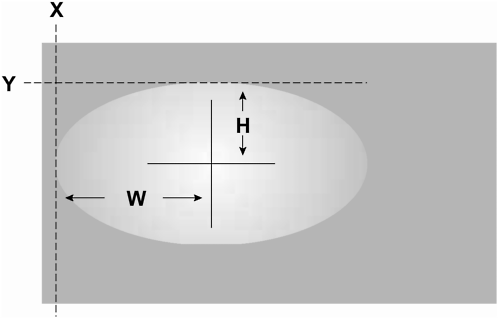CREATING FILLED SHAPES DYNAMICALLY
| Even though we're not going to devote an exercise to the topic, drawing filled shapes is still worth discussing. By building on the syntax you've used thus far in this lesson, you can use the drawing methods to create a shape and then fill it with a single color (a flat fill) or a gradient (a gradient fill). To create a flat fill, you must let Flash know that the shape about to be drawn will be filled. You do this by employing the following method: path.beginFill(color,alpha) The path points to the timeline where the lines will exist. The color parameter accepts a hex color value. The second parameter, alpha , accepts a number between 0 and 100 to set the alpha level of the fill. To let Flash know when you're finished drawing a shape, you would use the following method: path.endFill() Here is an example use of this code: _root.createEmptyMovieClip("box",1); with (_root.box) { lineStyle(0,0x000000,100); beginFill(0x990000,100); moveTo(0,0); lineTo(100,0); lineTo(100,100); lineTo(0,100); lineTo(0,0); box.endFill(); } The above ActionScript does the following,
It's important to note that when creating a filled shape, the starting point of the shape (as defined by moveTo() ) must also be the ending point of the shape (as defined by the last lineTo() ). Creating a gradient fill is a little more difficult than creating a flat fill; understanding how the gradient fill works is much more difficult. You must first tell Flash that the shape you're about to draw is to be filled with a gradient. The syntax for this is as follows: path.beginGradientFill (type, colors, alphas, ratios, matrix) The first parameter, type , accepts the string linear or radial. The colors parameter is an array of hex color values that you want to use in your gradient. This array can contain two or more elements. The third parameter, alphas , is an array of alpha values to be applied to each respective color. This array should have the same number of elements as the colors array. The ratios parameter is an array of elements that contain values between 0 and 255. These values determine the color distribution. The matrix parameter of the beginGradientFill() method deserves some attention. This object contains values that are used to move, skew, and rotate the gradient. There are two ways to configure the matrix object the more common of which contains the following properties:
Here is an example of the syntax used to create a gradient-filled shape: _root.createEmptyMovieClip("holder", 1); with (_root.holder) { lineStyle(0, 0x000000, 0); rotation = 90 * (Math.PI/180); colors = [ 0x6666FF, 0xFF6600 ]; alphas = [ 100, 100 ]; ratios = [ 0, 255 ]; matrix = { matrixType:"box", x:0, y:150, w:200, h:100, r:rotation }; beginGradientFill( "linear", colors, alphas, ratios, matrix ); moveTo(0,0); lineTo(550,0); lineTo(550,300); lineTo(0,300); lineTo(0,0); endFill(); } The above ActionScript creates a square and then fills it with a gradient. The lines of the square have an alpha of zero so you cannot see them. You'll probably need to test beginGradientFill() a few times to feel comfortable using it. |
EAN: 2147483647
Pages: 161
- Article 322 Flat Cable Assemblies Type FC
- Article 426: Fixed Outdoor Electric De-Icing and Snow-Melting Equipment
- Article 504 Intrinsically Safe Systems
- Annex C. Conduit and Tubing Fill Tables for Conductors and Fixture Wires of the Same Size
- Example No. D2(c) Optional Calculation for One-Family Dwelling with Heat Pump(Single-Phase, 240/120-Volt Service) (See 220.82)

